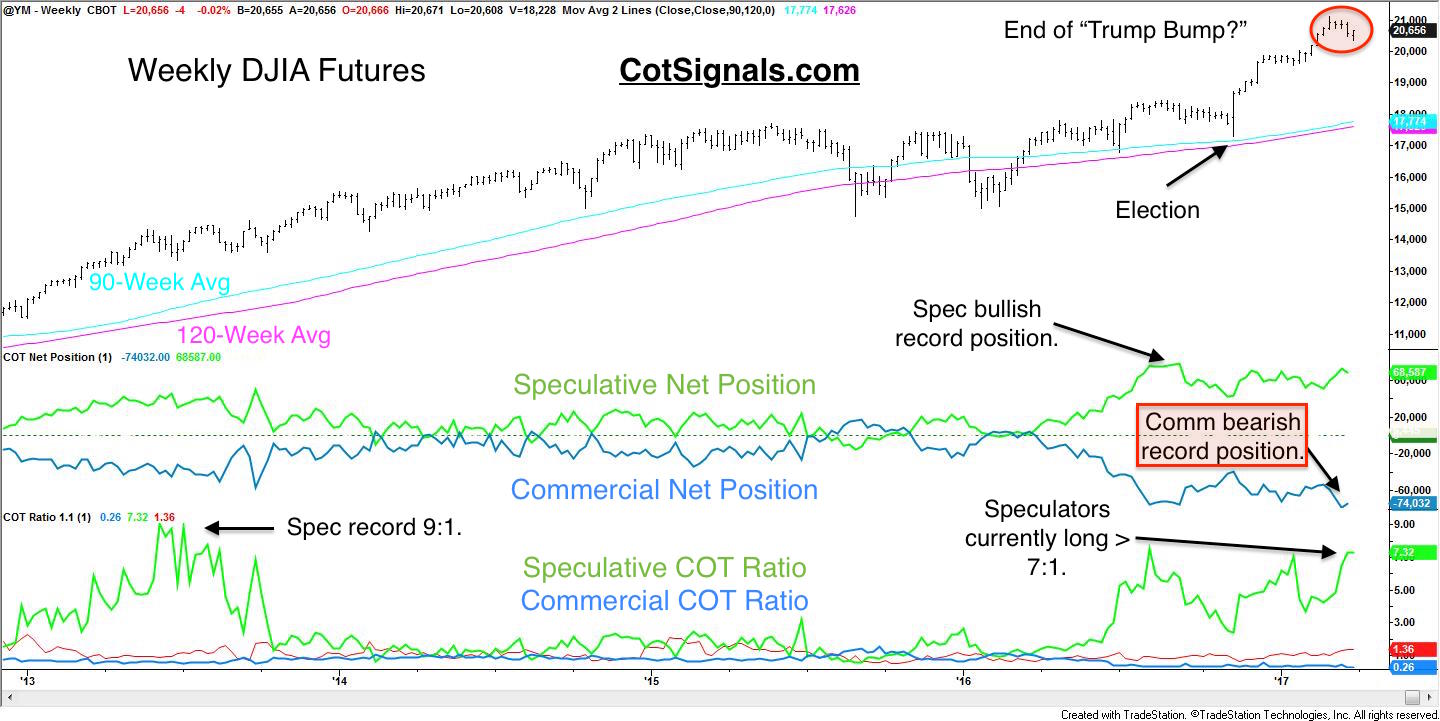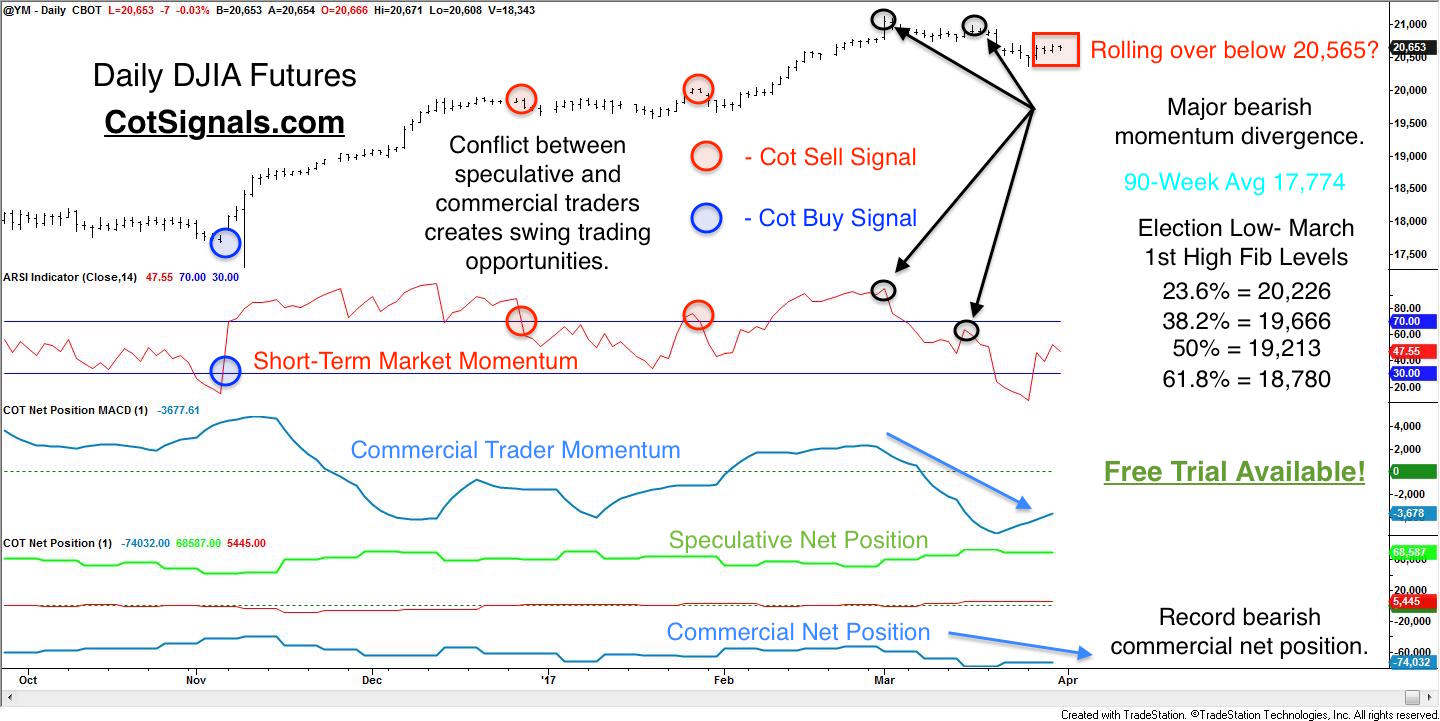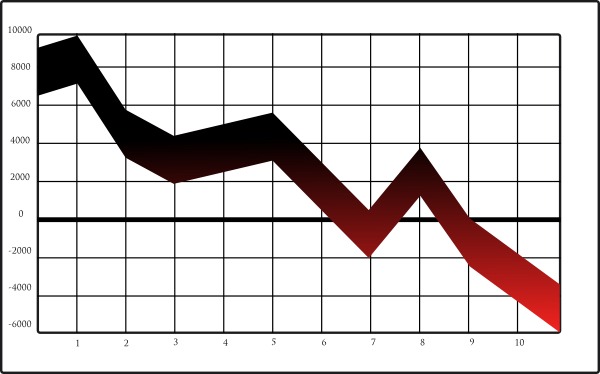The bull market in the stock index futures is finally showing signs of tiring. The primary difference over the last week has been the record selling by the commercial traders, which has driven their net position to a new net short record. We'll look at the structural forces at play through the Commitments of Traders report and distil this information down to an actionable daily scale to determine if the stock market is rolling over. Finally, we'll update some retracement targets and translate them into dollars per contract to illustrate just how big these swings can be within the context of standard market activity.
We'll begin with the weekly chart. The most important feature of this chart is the widening discrepancy between the commercial and speculative traders. The interactions among the market's participants had remained relatively normal through early 2016. However, once the Dow Jones futures began making all-time highs above 17,600 in April of last year, the behavior of both the commercial and speculative traders changed substantially. Speculators are trend followers. The higher the Dow climbs, the more they buy. Commercial traders, on the other hand, are value traders. They'll trade either side of a market as long as they feel it is over or, undervalued. The battle they waged through last summer ended in a stalemate as both sides withdrew a substantial portion of their positions before the Presidential election.
The second round of action and leads to the current situation. The trend higher resumed following the election, and the market's participants resumed their normal pattern. Speculators began buying as they joined the chorus of chants of "Dow 20k!" Conversely, commercial traders began to redeploy their protective short positions against their underlying cash holdings. There are two key features of the recent round of commercial selling. First, the commercial traders have committed more equity to the short side of the market than ever before, setting a new net short record on March 17th. Secondly, the weekly chart shows a bearish divergence between the Christmas and March highs. Furthermore, this divergence is coming off some of the most overbought weekly readings, ever.

Moving to the daily chart, you'll see just how constricted volatility has become. Typically, we expect general market movement to trigger at least one trade per month in most every market we track on our Cot Signals nightly discretionary email. However, the grind higher, which can also be confirmed by the unbelievably low volatility readings in the VIX index, has only generated three trades in the last six months. We think the new record short position set by the commercial traders is a signal that volatility may be heading higher. Remember, volatility in the stock market almost always means a decline in prices.

We think a close under 20,565 will confirm an uptick in volatility and signal further downside action. The Dow Jones futures have rallied more than 20% from the election bottom to the March high. We used these numbers to calculate the Fibonacci retracement levels above. At the current level, even a decline to the first retracement target of 20,226 is a cash decrease of more than $2,000 per futures contract. The deepest level we calculated, the 61.8% target of 18,780, just above the 10% correction level of 19,000, is more than $9,000 away. Also, going back to the weekly chart and the long-term moving averages, the 90-week average is at 17,744, another $5,000 below the 61.8% retracement level.
Those who've been riding the "Trump Bump" should seriously consider tightening their risk parameters. Record selling by the commercial traders is not something to be taken lightly. We demonstrated this repeatedly last year in soybeans and gold and more recently in crude oil. The Commitments of Trader Report is a valuable tool in determining the market structure within a given commodity. We put this data to use comparing net and total positions along with our COT Ratio indicator to determine areas of conflict between the commercial and speculative trading population. The bigger the battle, the bigger the swing trading opportunity.




